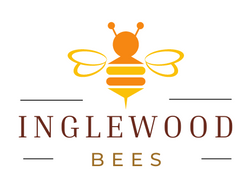As winter approaches, backyard beekeepers must shift their focus to ensure the health and well-being of their precious bee colonies. While bees are remarkably resilient creatures, they require extra care during the colder months to survive and thrive. In this blog article, we will explore the essential tasks you should undertake to prepare your hives for winter, with a particular emphasis on the importance of feeding your bees.
- Assessing Hive Health: Before winter arrives, it's crucial to conduct a thorough assessment of your hives' health. Check for signs of disease, pests, and any structural issues that might compromise the hive's integrity. Remove any unused or damaged frames, ensuring that your colonies have ample space for clustering during winter.
- Providing Sufficient Food Stores: One of the most critical aspects of winter beekeeping is ensuring that your bees have enough food to sustain them through the cold months. During winter, nectar and pollen sources become scarce, making it essential to provide supplemental feed. A healthy colony should have around 18-27 kilograms of stored honey or sugar syrup. Supplemental feeding can be done using sugar water or fondant, placed inside feeders or on top of the frames.
- The Importance of Pollen: Pollen is the primary source of protein for bees and plays a vital role in brood rearing. During winter, bees rely on stored pollen to continue raising young bees. Ensure your hives have access to a sufficient supply of pollen by providing pollen substitutes or leaving frames with stored pollen in the hive. This will support the health and development of the brood and help maintain the overall strength of the colony.
- Protecting Against Moisture: Winter brings with it increased moisture levels, which can be detrimental to bee colonies. To prevent excess moisture buildup inside the hive, ensure that the hive is properly ventilated. You can accomplish this by providing an upper entrance or using moisture-absorbing materials such as wood shavings or desiccant packs. Moisture boards or quilts can also be placed above the inner cover to absorb condensation and prevent mold or dampness.
- Insulation and Hive Wraps: In regions with particularly harsh winters, insulating your hives can be beneficial. Insulation helps to regulate temperature fluctuations and maintain a more stable environment inside the hive. Hive wraps made of insulating materials like foam or bubble wrap can provide an extra layer of protection against the cold. However, it's important to ensure proper ventilation is maintained even with insulation.
- Monitoring Hive Weight: Regularly monitoring the weight of your hives during winter is essential to gauge their food stores' depletion. Lift the back of the hive slightly to assess its weight. If it feels lighter than expected, it may be an indication that the bees are running out of food. In such cases, it is crucial to provide additional feed promptly to prevent starvation.
Winter is a challenging time for bees, and backyard beekeepers play a crucial role in supporting their colonies' survival. By taking proactive steps such as assessing hive health, providing ample food stores, protecting against moisture, and monitoring weight, you can ensure the well-being of your bees throughout the colder months. Remember, proper feeding is of utmost importance, as it helps your bees thrive, maintain strength, and prepare for the coming spring when they can resume their vital pollination work. Stay committed to the care of your hives, and you'll be rewarded with healthy and thriving bee colonies in the seasons to come.

